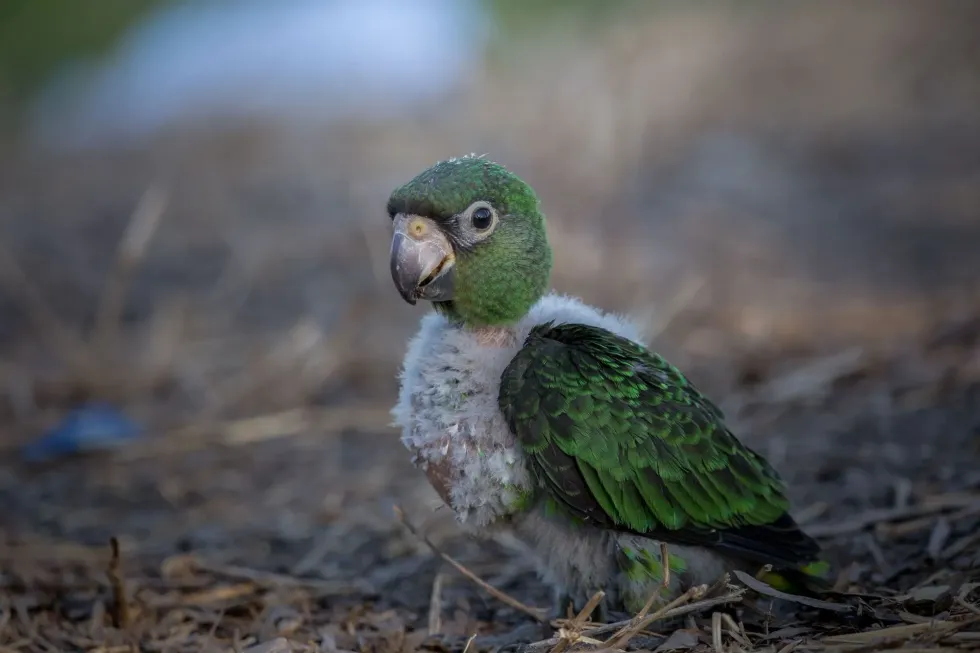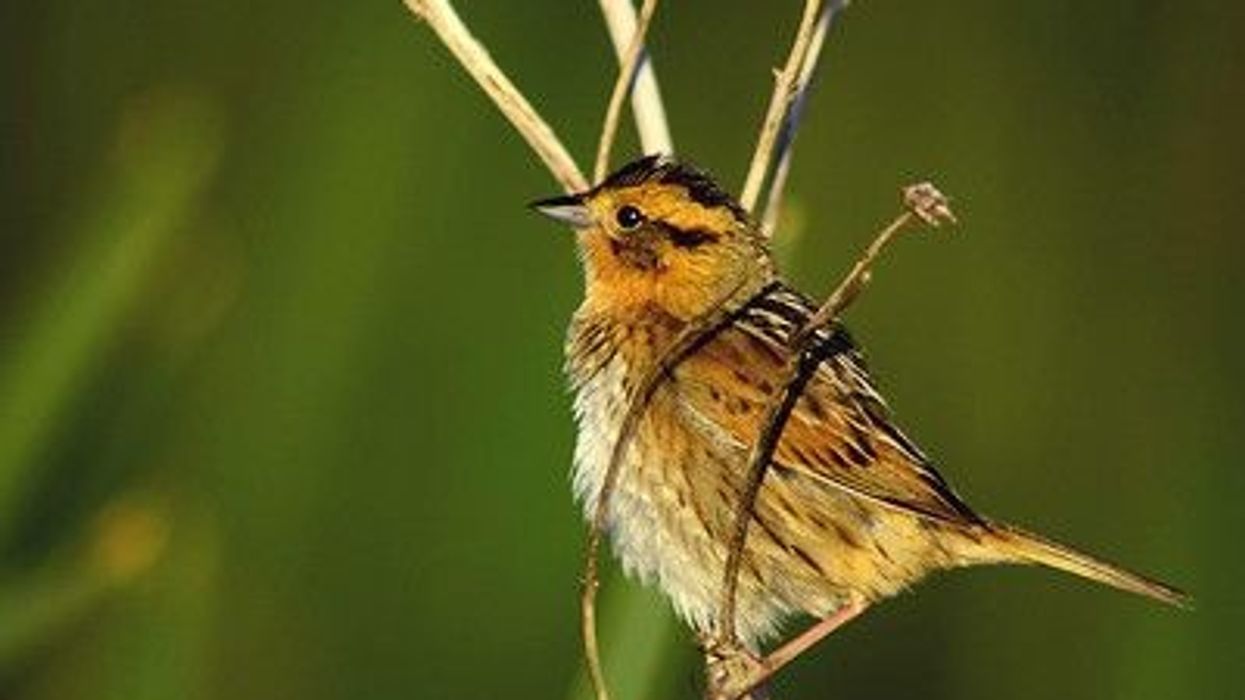The Jardine's parrot or red-fronted parrot is one of the most interesting species of African parrots. This beautiful green parrot is especially known for its orange-red crown on the head, which also gives it the honor of being called the red-crowned or red-headed parrot.
Moreover, the color scheme of these parrots is quite interesting because of the black or dark green feathers that are found on their wings.
The young birds lack the crown on their head but still manage to look as alluring as the adult.
Even though this species is mainly found in the wild habitats of west-central Africa, the bird has made its way to almost all parts of the world as beloved pets. These Jardine parrots have an omnivorous diet and feed on everything from insects to fruits.
Want to know more about this species? Keep reading to find out Jardine's parrot facts. For more relatable content, check out these cockatoo facts and hyacinth macaw facts for kids.
Jardine's Parrot Interesting Facts
What type of animal is a Jardine's parrot?
The Jardine's parrot or red-fronted parrot is a medium-sized parrot species that hails from Africa.
What class of animal does a Jardine's parrot belong to?
The Jardine's parrot belongs to the class Aves and to the genus Poicephalus. These African parrots also belong to the family Psittacidae that is shared by other species like the thick-billed parrot.
How many Jardine's parrots are there in the world?
As one of the commonly found African parrots, the population of this bird is yet to be determined.
Where does a Jardine's parrot live?
As we have said already, this parrot species hails from Africa. The location is divided according to the subspecies found in each place.
The Poicephalus gulielmi fantiensis subspecies is present in a range of east Liberia to Ghana, while the Poicephalus gulielmi gulielmi is found in southeast Nigeria and southern Cameroon as well as in northern Angola and in the Congo River Basin. In comparison, the Poicephalus gulielmi massaicus is present in western and central Kenya and Tanzania.
What is a Jardine's parrot's habitat?
When it comes to the habitat, these birds are mainly found in lowland rainforests, and the bird often dwells in the upper canopy to feed on fruits. Interestingly, these birds are also often present in coffee plantations. Other habitats include primary montane forests and secondary forests.
Who do Jardine's parrots live with?
These birds can be seen in small groups or even large groups in feeding grounds. The birds are also known to form roosting groups with their peers.
How long does a Jardine's parrot live?
Jardine's parrot lives for around 35 years, which is great for a medium-sized bird like this species. All the subspecies, including the lesser Jardines parrot lifespan, is also similar to the parent species.
How do they reproduce?
We are yet to know a lot about the breeding in this species. However, in Ivory Coast, the breeding season is said to be during the month of July, but it can last till November in other parts of Africa.
Like most other parrot species, this bird also likes to nest in tree cavities at the height of about 40 ft (12.2 m) above the ground. And, adult females may have a clutch size of two to four eggs which are incubated for 24-28 days.
It's thought that both the parents take care of the young birds.
The young chicks are ready to live the nests by 10-11 weeks when it's ready to feed on its own. If you suspect that your adult female bird is about to lay eggs, provide it with a nest box of 10x10 in (25.4x25.4 cm).
What is their conservation status?
According to the International Union for Conservation of Nature (IUCN) Red List, the Jardine parrots are classified under the status of Least Concern. Even though this isn't an endangered species, because of the extensive pet trade, it is sought to be protected.
If you keep it as a pet, make sure to get it from a Jardine's parrot breeder who is responsible.
Jardine's Parrot Fun Facts
What do Jardine's parrots look like?
The most striking thing about Jardine's parrots has to be their external appearance. It's also known as the red-fronted parrot because of the red-orange crown present on its head.
However, it's also known as the red-green Jardine's parrot because it's predominantly covered in green plumage. Another unique feature of this bird is the horn-colored beak that helps it to feed on fruits and seeds.
The orange-red feathers can also be seen near its wings and also on its thigh. The male red-fronted parrots have orange-red irises while it's orange-brown in the females. The squarish tail of this species is brownish-black.
Also, the wings of the red-fronted parrots have darker green or black feathers compared to the rest of its body. The young chicks are said to have a similar green plumage without any trace of red or orange feathers.
When it comes to differentiating between the subspecies, the P.g., massaicus is known for having a duller plumage compared to the plumage of P.g. gulielmi. Not much difference is found between greater Jardines' parrot vs. lesser Jardines.

How cute are they?
Jardines parrot as a pet has gotten more popular because these birds are extremely cute and adorable, just like Pesquet's parrot.
How do they communicate?
Everyone who has had these birds know about the Jardines parrot temperament, which includes intense bursts of screaming. But, that's not all about the species; it's also known for making the 'kweet' sound which is a mix of squealing and whistling.
These birds also make a squawking sound. And, if you like talking birds, then the Jardine parrot will surely amuse you with its talking and mimicry capabilities.
How big is a Jardine's parrot?
The average Jardine parrot body size is within 10.2-11.8 in (26-30 cm). Compared to it, the Senegal parrot has a body size of 9 in (22.9 cm).
How fast can a Jardine's parrot fly?
Like other species of parrots, we can assume that Jardine parrots also have a speed range of around 40-50 mph (64.4-80.5 kph). However, the birds kept as pets may not be able to fly at that speed because of a predominantly sedentary lifestyle.
How much does a Jardine's parrot weigh?
The average Jardines parrot weight is around 7-10.6 oz (200-300 g).
What are the male and female names of the species?
There are no specific names for the male and female of this species.
What would you call a baby Jardine's parrot?
A baby Jardine parrot is called a chick.
What do they eat?
The diet and feeding of the Jardine parrot are quite important. In the wild habitat, these birds mainly feed on seeds from the Spathodea pods.
Along with that, the diet also includes palm fruits, grains, wild olives, as well as the seeds of the southern silky oak (Grevillea robusta) plants. As an omnivorous species, the diet of this bird also includes insects.
When kept as a pet bird, the ideal diet of Jardines parrot should include high-quality pellets. However, you should also include fresh fruits and vegetables in the bird's diet along with sunflower and spray millet seeds.
If you want to train your Jardine parrot, think about using healthy treats. Always keep a restrain on feeding a pet bird, as overeating can lead to obesity which isn't desirable.
Are they dangerous?
No, these medium-sized birds aren't dangerous to anyone. However, these parrots can be a little feisty, so don't make the parrot angry as it can still peck you.
Would they make a good pet?
The Jardine's parrot as a pet is really great as this is an intelligent species, and it's preferred as a pet because of its long lifespan.
Moreover, it's easy to manage this species making it great for apartment dwellers, but you will need to make sure to keep the pets engaged with toys, or it can behave a little unruly.
At times it can also be a little loud, but you will instantly fall in love with your pets. But, we would still tell you that the Jardine parrot is often a part of the illegal pet trade, so while you are getting these pet birds, make sure that it's from responsible Jardine parrot breeders.
Also, it's important to provide an ample amount of cage space to this bird and make sure to provide two perches in the cage.
Along with toys, the birds need a bigger cage space to spread their wings and to have some exercise.
Did you know...
When these birds were first scientifically identified, it was given the name of Congo jack because it was predominantly found in the Congo area. This bird is still at times referred to as Congo red-crowned parrots or red-headed parrot, mainly because of its red or orange crown.
How did Jardine's parrots get their name?
By now, you will know that this bird is called the red-fronted parrot. But, the popular name for it is Jardine's parrot which comes from Sir William Jardine, who was the first person to describe this bird in 1849.
And, he was also the one to take one of these parrots to his home in the United Kingdom for his son from the Democratic Republic of Congo.
What's unique about a Jardine's parrot?
Jardine's parrots are known for being an intelligent and playful species that can be a little loud. Another unique thing about these parrots is the green plumage that lets them be well camouflaged amongst the leaves. This parrot is also known for having a long timespan.
Here at Kidadl, we have carefully created lots of interesting family-friendly animal facts for everyone to discover! For more relatable facts, check out these Amazon parrot fun facts and Alexandrine parakeet facts pages.
You can even occupy yourself at home by coloring in one of our free printable spotted catbird coloring pages.









